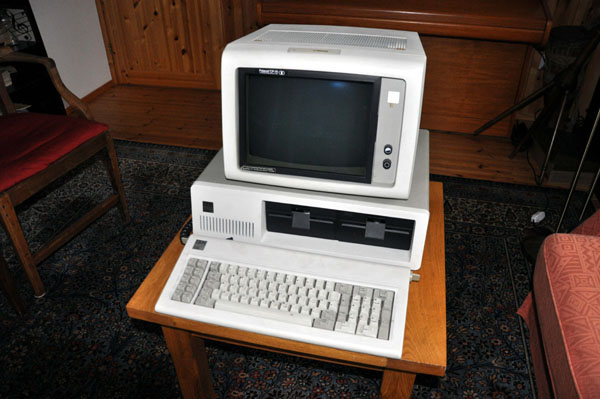
This is the IBM Personal Computer introduced in 1981. It was not the first personal computer but it introduced the IBM PC compatible hardware platform. Other manufacturers could provide compatible hardware that would support IBM's PC products.
Hitherto IBM supplied mainframe computers, along with computer operating systems, but this market was contracting due to competition from other suppliers and mini and PC computers.
Note, there is no mouse, just a keyboard. It weighed 27Kg, built to battlefield specifications.
There are two 5 1/4" floppy disk drives: no hard disk inside.
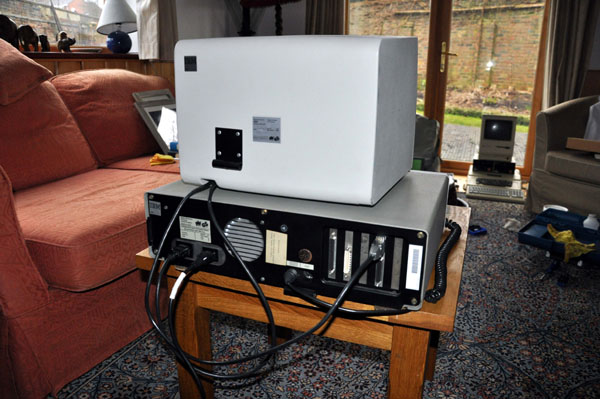
The view of the rear. Keyboard cable, monitor cable, power to base and from base to monitor.
No network card, but an asynchronous port to which a modem could be attached to connect to a mainframe computer which was a gateway to the Internet.
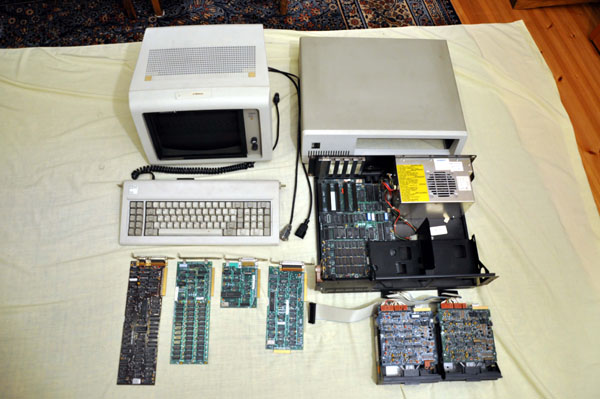
This is it, in ten pieces (eleven really since the mother board is still in the base).
The monitor and the base unit cover are at the top of the picture. The keyboard and the base unit with motherboard and power supply are in the middle. The bottom row shows four boards and two floppy disk drives.
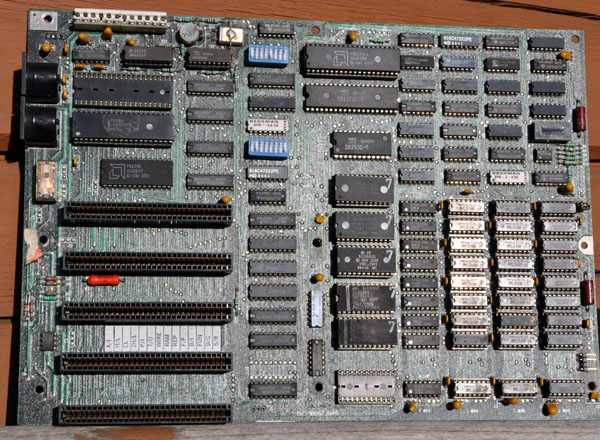
This is the motherboard out of the base unit.
Top left are two 40 pin chip carriers. The upper is empty; it is for an Intel 8087 math coprocessor which this PC did not have. Below it is the Intel 8088 processor. This was a 5MHz, 8bit bus, 16 bit word, 4.5M transistor chip. It was the engine that controlled the computer by taking an instruction from the memory, to execute it, then fetching the next instruction and executing it. However, the next instruction might branch to some other instruction, depending on the result of the previous instruction.
Below them is the 8259 Interrupt controller and below that the 5 ISA Industry Standard Architecture 62 contact bus ports. These allowed other things to be connected to the mother board.
At the bottom right is a block of 8x4 chips, plus a 4 chip row. This is 256KByte of ram, the 8 chips provide the 8 bits per byte and the 9th the parity bit. So each of the chips stored 64 Kbits.
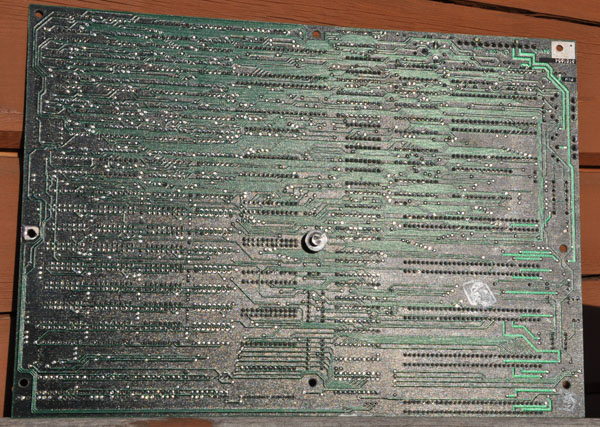
This is the rear of the mother board where the conductors go horizontally, whereas on the front they go vertically, so it is a two-layer printed circuit board. (In the same year as this, 1985, an Amdahl 5860 Mainframe computer had eight 15-layer printed boards in the equivalent component.)
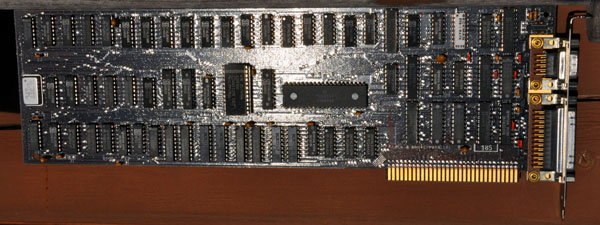
The first of the boards connected to the motherboard is the BLACK & WHITE/PARALLEL board. It had a 9 pin socket to connect to a black and green monitor and a 25 pin socket to connect to a parallel device such as a printer.
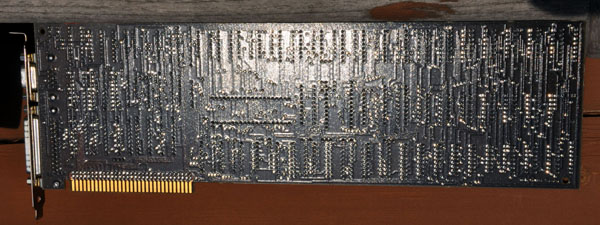
The rear of the BLACK & WHITE/PARALLEL card.
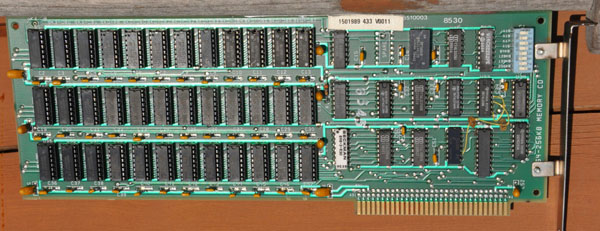
The next ISA card is the 64-256KB MEMORY CD card. This is additional RAM to that on the motherboard, making a total of 512KByte of RAM.
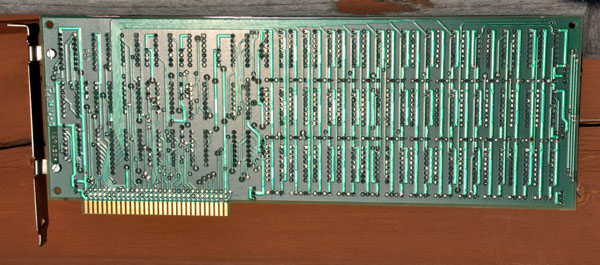
The rear of the 64-256KB MEMORY CD card.

The ASYNC CARD presented a 25pin connector on the rear of the base unit. This was a serial interface sending/receiving a single bit stream of data with no timimg signal. The stream began with a start bit of zero, followed by 8 bits of a Byte, then one or two stop bits. The typical device to connect would be a modem, connected to a telephone line that would be connected to a remote modem, that would be connected to a remote computer.
Once connected to the remote computer it would present a Login prompt, followed by a password prompt, which if entered correctly gave access to the remote computer's resources. These might be accessing: an email box, files, file transfer, remote login or any any other services it provided.
The heart of the ASYNC CARD is a big chip labelled INS8250-N. It is the UART (Universal Asynchronous Receive/Transmit) chip. It converts the parallel data to serial for transmission, and the received serial data stream to parallel.
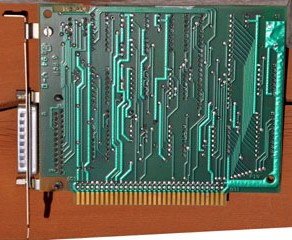
The rear of the ASYNC CARD
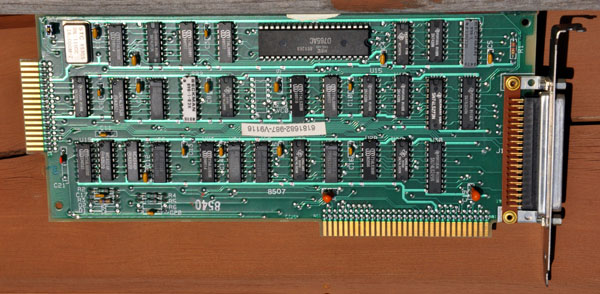
The fourth card was the floppy disk drive controller card. The drives were connected by a 34 conductor ribbon cable to the plug on the left. On the right is a 37 pin socket to connect external devices.
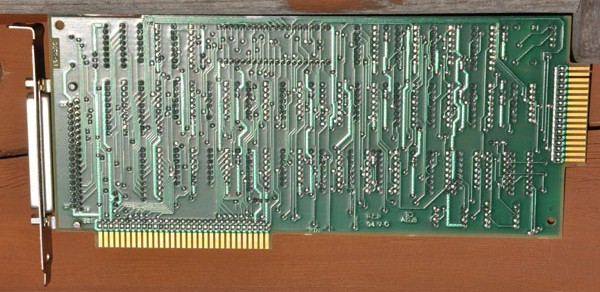
Rear of disk controller card.
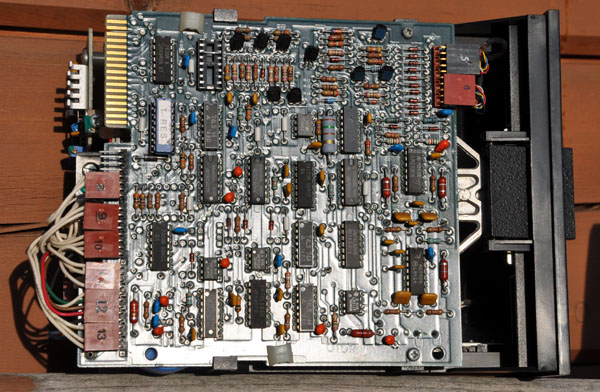
Top of floppy disk drive.
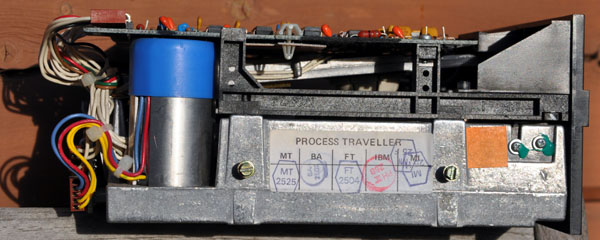
PROCESS TRAVELLER side of floppy disk drive.
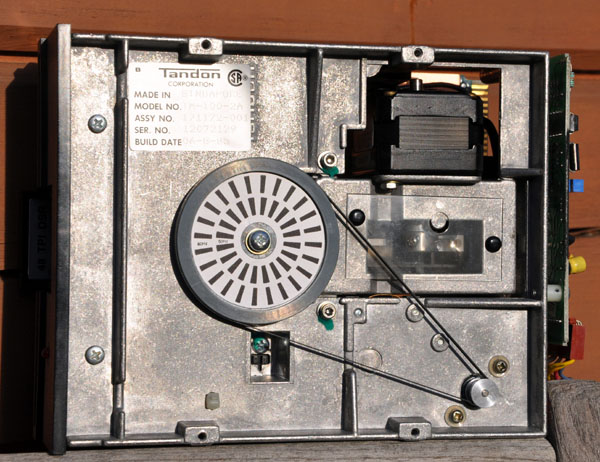
Bottom of floppy disk drive. The label is just readable:
Tandon
CORPORATION
MADE IN SINGAPORE
MODEL NO. TM-100-2A
ASSY NO. 171172-001
SER. NO. 12072129
BUILD DATE06-8-85
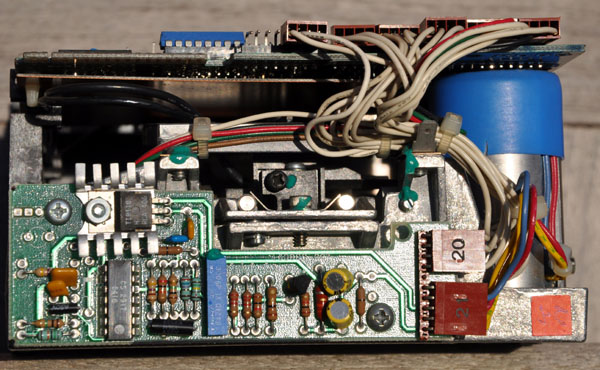
The other side.
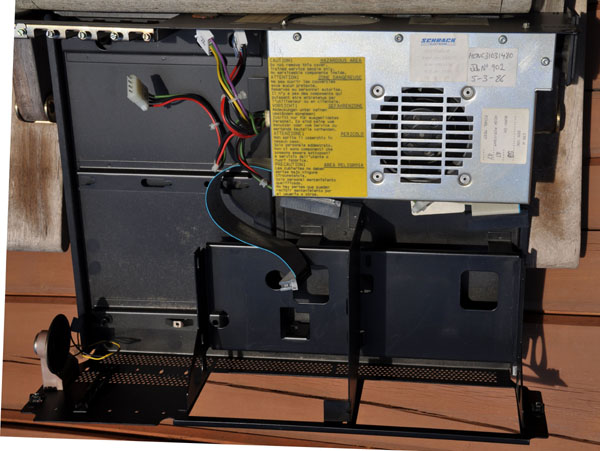
The base unit is empty, except for the power supply.

Rear of empty base unit.
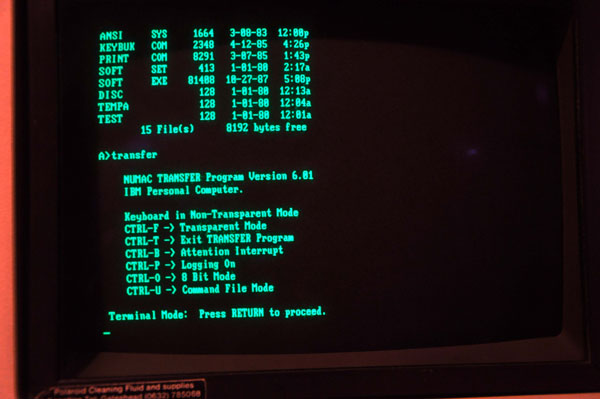
We finish with a couple of screen shots.
Here from the command prompt A> the command transfer has been entered.
The first two lines
NUMAC TRANSFER Program Version 6.01
IBM Personal Computer.
suggest that it is a locally written program, (NUMAC - Northumbria Universities Multiple Access Computer), to transfer files between the PC and a mainframe.
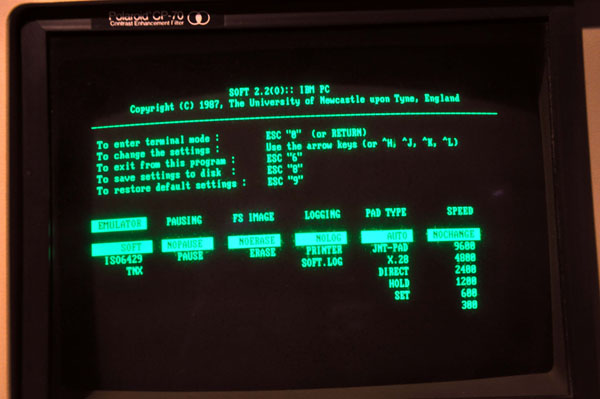
This second screenshot is of the entrance screen to the SOFT program that was also locally written at The University of Newcastle upon Tyne, England in 1987. It was a WYSIWYG (What You See Is What You Get) editor, bringing to the IBM PC the capability of the very successfull Unix VI editor.
The author of SOFT was Alan Hunter, he died of a brain tumour in his fifties.